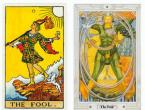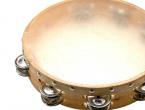The toes of the left foot are cold. Poor circulation: why the toes are cold
Why are my hands and feet freezing?
Doctor answers
Health
Subscribe.Ru
Many people are familiar with this condition - icy hands and feet. This indicates a delay in blood circulation and an increase in blood viscosity. On the one hand, it is vascular sclerosis, on the other, a disease of the nervous system.
It is a mistake to think that only the elderly are susceptible to such a symptom as cold feet. Even quite young people can feel this cold - not only the toes, but also the calves and feet can become cold. And no amount of heat will help them keep warm.
There are many reasons why you may feel frozen toes. One of them is the lack of fatty tissue under the skin. It is the fatty layer that retains heat, and its lack leads to a feeling of freezing.
Extremities get colder (regardless of the weather) for various objective reasons, among which the attention of physicians should be drawn to numbness of the toes (hands) without obvious actual signs. That is, this symptom is not associated with trauma, hypothermia, low external temperature, tight shoes or tight gloves, being in an uncomfortable position for a long time, etc. The squeezing effect can cause discomfort, manifested by tingling in the fingers, a decrease in their sensitivity, and limited mobility. As soon as this cause is eliminated, all negative symptoms disappear without a trace. After all, the blood supply to the tissues of the hands and feet is restored, the nerve endings receive enough nutrition to function normally.
- Age-related changes. In men, the problem of cold feet often begins to manifest itself after overcoming the 50-year mark. This is due to hormonal changes in the body. During this period, there is a decrease in all physiological processes, a deterioration in blood circulation, a weakening of the immune system, a decrease in the subcutaneous fat layer and, as a consequence, a violation of heat exchange processes.
- Disruption of the blood circulation. If the soles of the feet are constantly freezing, this is due to insufficient peripheral circulation, which entails poor nutrition of small vessels.
- Low blood pressure. Cold, quickly freezing feet may indicate disorders of the cardiovascular system, manifestation of hypotension, atherosclerosis, and also be a symptom of autonomic disorder.
- Narrowing of the lumen in the veins and arteries. At the age of 40-50, people often notice that their feet are sweating more often than usual. This may be a sign of a serious disease - obliterating endarteritis, which affects the arteries of the legs. Due to the sharp narrowing of the lumen of the arteries, blood flow becomes difficult, as a result of which the blood supply to the limbs is weakened. And the accompanying development of the inflammatory process also affects the veins.
- Disorders in the thyroid gland. Always cold lower limbs can signal that the thyroid gland is not producing enough hormones. The body receives little energy required for heating, as a result of which the person is constantly chilly. Such symptoms can also occur with low hemoglobin.
- With Raynaud's disease, there are frequent vasospasms, arterial blood supply to the extremities is disrupted and, as a result, constantly freezing legs and severe pain in frozen fingertips. The cause of such a disease can be both high activity of the autonomic system and a violation of connective tissues, or simply increased emotionality.
- long-term chronic stress
- excess weight
- smoking and alcoholism
Low blood pressure. Cold, quickly freezing feet may indicate disorders of the cardiovascular system, manifestation of hypotension, atherosclerosis, and also be a symptom of autonomic disorder. If blood pressure is low, as they say, slowly flows through the vessels, blood flow suffers, and primarily in the extremities, in the periphery.
And when the pressure is high, vasospasm occurs and the blood flow also suffers. This may be due to disorders of the heart muscle, vascular dystonia, local circulatory disorders due to varicose veins or an abnormal structure of blood vessels in the legs. Poor blood circulation prevents heat from being delivered to the legs.
In this case, dried apricots, raisins, pomegranates, almonds, oatmeal porridge, multivitamins, pumpkin, salads, fresh fruits and vegetables should become your constant food.
5. Eat in the cold season fatty sea fish, mackerel, salmon, pangasius and others, this will relieve a little soreness from vasospasm during freezing.
6. Drink more vitamin and herbal decoctions, compotes, fruit drinks, increasing blood circulation.
7. When going outside, the most important thing is to keep your head, arms and legs warm.
By the way, cholesterol plaques arise precisely because of fatty foods, which must be dosed wisely, not overeat. When the blood becomes too thick due to fatty foods, it cannot move quickly enough through the vessels, depriving them of oxygen and nutrients, and therefore the legs freeze.
It is very good to occasionally drink drinks with ginger in the composition. Half a teaspoon of ginger, one teaspoon of honey, black pepper on the tip of a knife - pour all this into a glass of boiled hot water. This drink will warm and stimulate blood flow in the legs. It will also help you not to get sick from hypothermia.
Red and black peppers in the diet, as well as mustard and horseradish, are also good for blood. They stimulate blood circulation, help fight cold feet syndrome, and prevent excessive blood thickening.
Raw garlic, garlic capsules or dry powder actively improve blood circulation.
Gingko biloba is an exotic herb that also works well against slowed circulation. This medication is sold in pharmacies.
The hawthorn infusion not only saturates the blood with vitamins, but also helps to fight colds, strengthen the immune system. Pure infusion of hawthorn can be taken 2 times a day - morning and evening 20 minutes before breakfast. A complex composition of cinnamon and ginger can be added to hawthorn, this will further enrich the blood with useful substances and help strengthen the immune system.
Feet Freeze: Emergency
Sometimes there are situations when it is necessary to make sure that the feet do not freeze. Well, for example, you will not sit in the office with your feet in a basin of warm water or pulling on woolen socks.
Hello. I don’t know which specialist to contact. I am 38 years old. I have such a problem. Outside. In frost, even a little. My big toe is numb. At first it was the middle finger. And now the big one. When I get into a warm room, I can't warm it up for a long time. He's all white. When it warms up, there is no pain, only unpleasant sensations. This only happens on the street. Not connected with shoes. Now I have shoes with two insoles. And two sizes larger. What to do. Tell me. Thanks in advance.
marina Zotova, St. Petersburg
Similar questions:
| date | Question | Status |
|---|---|---|
| 31.01.2016 |
Hello. Please help me very much. Last summer, I went to the garden to pick strawberries, sat down and felt a severe pain between my legs in the intimate part. I got up and saw that there was some kind of iron thing like a stick, but with the size of a finger, maybe a little more, I realized that I wanted to go home to draw on it, I felt hot on my leg, I saw blood dripping from my pants. I was very frightened of the blood. An hour later, she only told the parents because there I had a big bump near the genitals ... |
|
| 31.01.2014 |
Two years ago, my wife froze several toes, and was looking for gifts under NG. I did not go to the doctors, I thought that it would go away on its own, just froze. There were small blisters (3 - 5 mm) like calluses. A week or two later, the skin at the site of the blisters "peeled off". To this day, it suffers, as soon as the coolness, the affected fingers swell, become both red and translucent. But most importantly, they become extremely sensitive. Absolutely any light touch causes severe pain. What to do? |
|
| 07.01.2016 |
Diagnosis: 19. 12. 15 P. Kh. About the wound of the right thigh (wound of the inner surface of the right thigh n \\ 3 12x3. 5 cm deep to the condyle of the femur, there is a chipped fracture of the condyle _ the size of the fragment 1. 8x2.0 cm is fixed with nylon thread. Complaints - 7. 01.16 the knee is swollen, painful, flexion 5-10 degrees, it is not possible to step on the leg - severe pain in the knee and upper calf Question - if you go to the surgeon for consultation, you need to do an MRI first to save time? Sleep ... |
|
| 30.10.2015 |
On the inner side of the leg, 20 cm above the knee, a brown spot appeared from the beginning. The size of a grain of rice, I forgot about it, after half a year it became pink and about 0.4 cm in diameter.It does not hurt, but when you press, you feel a seal under the finger |
|
| 30.07.2017 |
Hello, I am 17 years old, I had a hernia operation on my lower back. On June 29 I underwent surgery, a month has passed. Yesterday I got into the car in the front seat, I spread it out to the end and my legs were down and I had a slight pain in my back and began to ache and feel numbness in my fingers. I also had my period on the 29th, can they affect it? |
The question of why the toes are freezing is relevant for many men and women. If in winter this can be explained by out of season shoes, then in summer it is rather difficult to find the cause of this phenomenon. For many people, their toes get cold so much and for a long time that even a heating pad and warm socks do not help. This can be the result of both temporary weakness and a rather serious illness. In order to prevent its possible complication, it is necessary to understand the causes of such a pathology. Read about why fingers and feet are cold.
Possible causes of freezing fingers
The prevailing opinion that the toes and heels are cold only in elderly people is fundamentally wrong.
An unfavorable environment and an incredibly active lifestyle lead to the fact that not only middle-aged people, but also young people become victims of various diseases.
The reasons why fingers and toes are cold can be the following:
- Excessive sweating. Excessive sweating leads to increased evaporation. This process causes a strong cooling of the limbs.
- Low blood pressure. This leads to poor blood circulation, especially in the legs. The result is persistently cold fingers.
- Expansion of the veins. This phenomenon is becoming more common, as the number of people who like to spend hours at the computer is constantly increasing.
- Diseases of the thyroid gland. One of the symptoms of this disease is metabolic disorders, which significantly affects the quality of blood circulation. Heels, feet and toes are cold.
- Iron-deficiency anemia. This disease is quite dangerous for humans. A low amount of hemoglobin leads to oxygen starvation, which is especially acute in the limbs.
- Poor nutrition or lingering diets. The lack of foods rich in fats and vitamins in the diet leads to the fact that the body does not have enough energy to fully supply all organs. As a result, not only the heels and toes are constantly freezing, but also the entire body.
- Smoking and drinking alcohol. Bad habits lead to vasoconstriction. Insufficient blood flow to the extremities leads to freezing of the fingers and toes.
- Severe fright or stress. AT extreme situation the body's defense reaction is to weaken the blood supply to the limbs in favor of the brain and major muscles.
- Shoes that are tight and uncomfortable. Strong pressure on the feet leads to a partial or complete cessation of blood flow to the feet. The result is quite understandable cold toes and heels, even in the summer heat.
- Slimming clothes. Many ladies like to wear skinny jeans and tights, trying to hide the flaws of the figure. While solving one problem, they unconsciously create another. Tight clothing can lead to a complete cessation of the blood supply to the lower extremities, which is fraught with unpleasant consequences.
Thus, it becomes clear that if your fingers are cold, then this is not a trifle that can be brushed aside. It is necessary to find and eliminate the problem that gave rise to this pathology.
How to get rid of discomfort
It is definitely impossible to answer the question of what to do with the ever-freezing fingers. First of all, it is necessary to find the hidden cause of this phenomenon. To do this, you need to undergo a comprehensive medical examination and pass various tests. It is possible that after the cure of the identified disease, the discomfort in the limbs will disappear.
In order to weaken them without medical assistance, you can carry out the following activities:

If you take a comprehensive approach to the problem of cold fingers, then the probability of its solution will be quite high.



